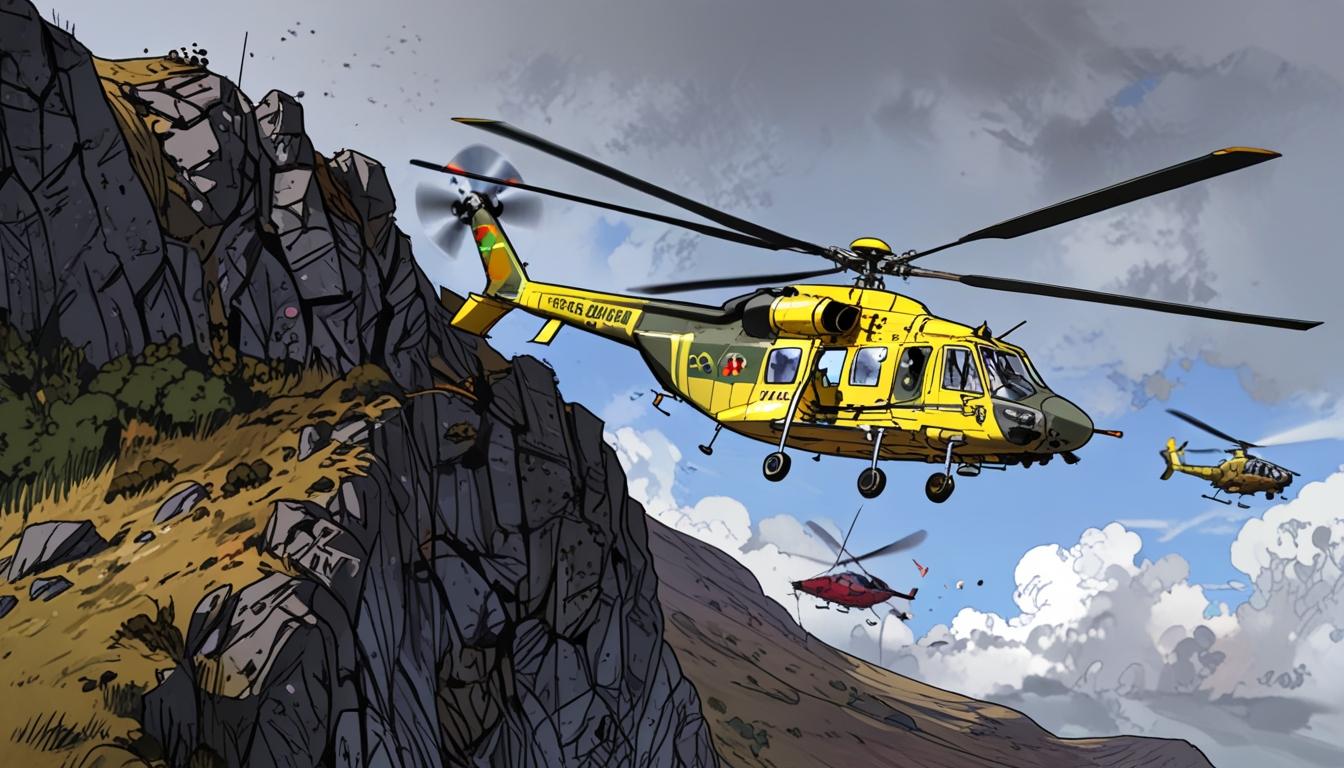Police in Northern Ireland have condemned a recent near-miss between a rescue helicopter and a drone as “absolute madness,” warning that the consequences could have been catastrophic. The incident unfolded in the Mournes on Saturday evening when the coastguard helicopter, following a successful rescue operation in the Lower Cove area, was preparing for take-off to return to its base in Prestwick, Scotland. As the helicopter awaited clearance, officers noticed a drone flying dangerously close, prompting immediate concern and action.
As the police worked with the Newcastle Coastguard to secure the landing site for Maritime and Coastguard Agency Rescue Helicopter 199, they responded to the looming threat posed by the unknown drone in the vicinity. Fortunately, the helicopter had just completed its mission—transporting a casualty to a Northern Ireland Ambulance Service vehicle. An officer swiftly alerted the coastguard of the drone sighting, yet despite their efforts to locate the drone operator, it had vacated the area by the time they arrived.
The police spokesperson emphasised the gravity of the situation, stating, “Had that drone impacted with the helicopter at any time, the result would have been catastrophic.” This sentiment echoes increasing concerns about drone operations near emergency services, as highlighted by the European Union Aviation Safety Agency. EASA firmly advises that drones should not be operated near emergency helicopters unless operators are collaborating with the emergency services. In emergencies, the agency insists that operators must land their drones immediately upon hearing or seeing any incoming helicopters.
The dangers associated with indiscriminate drone use have become a pressing issue internationally. In the United States, drones are implicated in two-thirds of reported near misses with commercial airliners, particularly around busy airports—highlighting the urgency for stricter regulations. The Federal Aviation Administration (FAA) has enacted various measures to mitigate risks, including bans on unauthorized drone flights near airports and mandatory registration for drones over a certain weight. Yet, enforcing these regulations remains a significant challenge.
This incident in the Mournes mirrors other alarming encounters with drones internationally. In Australia, for instance, a near miss between a drone and a Westpac Lifesaver rescue helicopter led to calls for enhanced regulations and mandatory training for drone pilots. Similarly, incidents involving drones have also been reported in the UK, with authorities stressing the importance of adhering to legal flight altitudes and other safety measures. Notably, a drone in Londonderry operated at about 1,000 feet, significantly violating UK law; such actions could not only result in severe penalties but also endanger lives.
As drones proliferate in various capacities, their allure must come with an understanding of the inherent responsibilities. Police in Northern Ireland are actively seeking witnesses or anyone with information about the incident, reminding the public of the potential legal ramifications of negligent drone operation. The broader implications of such near-misses, especially during critical operations, underscore the imperative for responsible behaviour among drone users to preserve the safety of all in shared airspace.
The message is clear: drones are not toys, and their operation requires a serious commitment to safety and legality.
Reference Map
- Paragraph 1: [1]
- Paragraph 2: [1]
- Paragraph 3: [3]
- Paragraph 4: [2]
- Paragraph 5: [4]
- Paragraph 6: [5]
- Paragraph 7: [6]
- Paragraph 8: [7]
Source: Noah Wire Services
